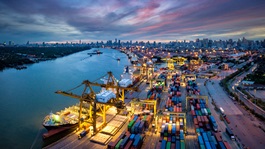Publication
Distress signals: Cooperation agreements or mergers to the rescue in times of crisis?
The current volatile and unpredictable economic climate creates challenges for businesses.


United Kingdom | Publication | May 2020
Section 126 is the general interpretation section of the Building Act 1984 (the “Act”); in it “statutory undertakers” is defined as:
“means persons authorised by an enactment or statutory order to construct, work or carry on a railway, canal, inland navigation, dock, harbour, tramway, or other public undertaking; but does not include a universal service provider (within the meaning of Part 3 of the Postal Services Act 2011) or a relevant company (within the meaning of Part 4 of the Postal Services Act 2000)”.
The definition appears a few times in the Act, but of principal note is section 4 which provides that:
“nothing in this Part of this Act with respect to building regulations, and nothing in any building regulations, applies in relation to …. (b) a building belonging to statutory undertakers… and used or held by them for the purposes of their undertaking”.
There are exceptions in the case of houses; and buildings used as offices or showrooms and not forming part of a railway station.
At first blush one might consider that since a “private heritage railway” was necessarily “private” that it would therefore not have the character of a “public undertaking” such that it would fall within s.126. This, however, is not always the right answer. In some cases the original Act (under which the now “heritage line”) was authorised may be extant or, more often, the re-opening of the line and the restoration of railway services may be governed by a ‘light railway order’ (confirmed by the Secretary of State under powers first established by the Light Railways Act 1896). For example, Regulation 5 of the Swanage Light Railway Order 1987 (SI 1987/1443) provides as follows:
“…the Company may construct, make and maintain the railway hereinafter described in the lines and according to the levels and within the limits of deviation shown on the deposited plans and the deposited sections and with all proper rails, plates, sidings, junctions, bridges, culverts, drains, approaches, roads, yards, buildings and other works and conveniences connected therewith”.
Further, Regulation 6 provides:
“… the Company’s railway may be worked as a light railway under the principal Act.”
On any interpretation the “Company” is plainly “authorised” by a “statutory order to construct, work or carry on a railway” under section 126.
The “Company” here referred to is the Swanage Railway Company Limited which still operates the “premier heritage steam railway in Dorset” according to the Swanage Railway website and is a private undertaking.
Whether any particular “private heritage railway” fell within the definition of “statutory undertaker” in section 126 of the Act would therefore need to be approached on a case by case basis.
Publication
The current volatile and unpredictable economic climate creates challenges for businesses.

Publication
Recent tariffs and other trade measures have transformed the international trade landscape, impacting almost every sector, region and business worldwide.

Publication
In mid-March 2025, Cognia Law and Norton Rose Fulbright’s Legal Operations Consulting team co-hosted a second roundtable event that brought together senior leaders, including GCs, COO and head of legal operations, from across the legal industry to discuss how to drive meaningful change within the legal ecosystem.
Subscribe and stay up to date with the latest legal news, information and events . . .
© Norton Rose Fulbright LLP 2025